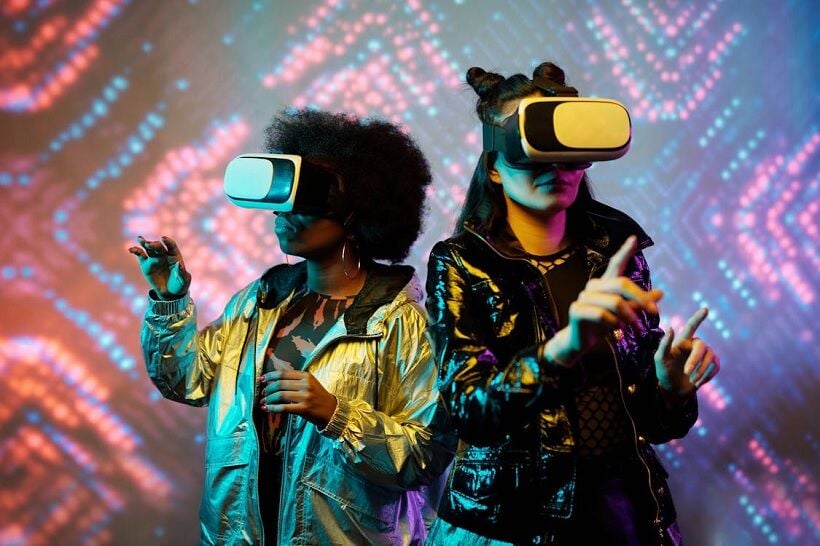Can Virtual Reality Therapy Ease Anxiety?

In a world where technology and mental health are increasingly intertwined, virtual reality (VR) therapy emerges as a beacon of hope for those battling anxiety. Imagine stepping into a serene environment, away from the chaos of the real world, all from the comfort of your own home. VR therapy offers just that, providing a safe space for individuals to confront and work through their anxieties.
VR therapy can significantly reduce anxiety and stress levels. With applications ranging from relaxing environments to targeted exposure therapy, this innovative approach is reshaping the landscape of mental health treatment. But how effective is it? Can virtual reality truly make a difference in managing anxiety?
Virtual reality therapy
Virtual reality (VR) therapy is a cutting-edge approach that leverages immersive technology to tackle anxiety and various phobias. By donning a VR headset, you’re transported into meticulously crafted virtual environments designed to simulate real-life scenarios. This method, rooted in exposure therapy, gradually exposes you to your fears in a controlled, safe manner. The goal is to desensitize your response to anxiety triggers over time.
The versatility of VR Therapy allows for its application across a broad spectrum of anxiety disorders. Whether it’s social anxiety, specific phobias, or even PTSD, VR’s adaptability offers a unique form of intervention. This is partly due to VR’s ability to create hyper-realistic environments. Modern VR tech achieves this through enhanced sensory feedback, such as auditory and haptic cues, which amplify the sense of presence and realism in the virtual world.
Advanced tracking and biometric sensors within the VR equipment capture your responses in real-time. This objective data provides therapists with invaluable insights into your progress, enabling tailored therapy adjustments. Furthermore, it supports a more interactive therapy session, with therapists able to modify environments on the fly based on your reactions.
The scope of conditions treatable with VR is ever-expanding, beyond conventional anxiety disorders to include stress, tension, insomnia, and even complex phobias like fear of flying or heights. Each condition is addressed through specific VR protocols, ensuring a targeted and effective therapeutic process.
Understanding anxiety and its impact
When tackling anxiety, it’s vital to grasp its complexities. Anxiety isn’t just feeling stressed or worried; it’s more pervasive, impacting every aspect of life.

Types of anxiety disorders
Anxiety disorders come in various forms, each with unique characteristics. Here’s a snapshot:
- Obsessive-compulsive disorder (OCD): A cycle of obsessions and compulsions.
- Social anxiety disorder: Intense fear of social situations.
- Post-traumatic stress disorder (PTSD): Trauma-related anxiety.
- Generalized anxiety disorder (GAD): Persistent, excessive worry.
Each type differs in cause and consequence, but all significantly impede daily functioning. Recognizing the specific disorder is essential for effective treatment.
Symptoms of anxiety
Anxiety manifests through a blend of physical and psychological symptoms. Common signs include:
- Physical symptoms: Trembling, stomach aches, headaches.
- Psychological symptoms: Feelings of panic, fear, or unease.
- Behavioural changes: Avoidance of anxiety-inducing situations, need for reassurance.
Symptoms vary widely based on the anxiety disorder. However, the impact on daily life is a constant. These disruptions can affect work, relationships, and personal health. Understanding these symptoms is the first step towards managing anxiety.
Effectiveness of virtual reality therapy in reducing anxiety

Benefits of virtual reality therapy
The therapeutic landscape of anxiety treatments has been remarkably enhanced by VR technology. By simulating real-life scenarios, VR provides a safe space for individuals to confront and adapt to their fears without real-world repercussions. Such exposure, under controlled settings, is pivotal in the gradual desensitisation of anxiety triggers.
The psychological benefits of VR therapy are complemented by its physiological impact. Studies have documented reductions in stress response indicators such as muscle tension and skin conductance following VR sessions. These objective measures provide a solid foundation for VR therapy’s efficacy, reinforcing its value as a complement to traditional anxiety treatments.
Implementing virtual reality therapy for anxiety
Process and techniques
When you’re considering Virtual reality therapy (VRT) to combat anxiety, it’s imperative to understand the process and techniques involved. VRT immerses you in a digital environment, meticulously crafted to simulate scenarios that trigger your anxiety. This immersive experience is not just about visual stimuli; it incorporates auditory, tactile, and at times, olfactory elements to enrich the virtual environment. The realism of these environments is paramount, as it fosters a sense of presence, making you feel truly ‘there’.
A typical session begins with an orientation to familiarise you with the VR equipment and environment. This initial step ensures comfort and reduces any potential technological barriers to therapy. Following this, VRT employs exposure therapy techniques, gently introducing you to your anxiety triggers in a controlled, safe virtual space. This methodology enables you to face fears directly and develop coping strategies under the guidance of a therapist.
Key to the process is the adaptability of VRT. Scenarios can be tailored specifically to individual triggers, allowing for a personalized treatment approach. This adaptability extends to the pace at which you’re exposed to your fears, offering a gentler approach to anxiety management compared to real-life exposure.
Precautions and considerations
While VRT presents a promising avenue for anxiety reduction, several precautions and considerations need to be acknowledged. Firstly, the selection of candidates for VRT is critical. Individuals with severe motion sickness, epilepsy, or other conditions that could be exacerbated by VR should proceed with caution or explore alternative therapies.
Screening for suitability to VRT is a vital initial step, ensuring that the technology and method of delivery align with your specific needs and health profile. It’s also important to consider the emotional intensity of VR exposure. For some, the vividness of the virtual environment might initially heighten anxiety levels. A professional therapist can help navigate these feelings, ensuring that VRT serves as an effective tool rather than a stressor.
If you’re seeking stress reduction methods in Bangkok, we invite you to explore our article, Winding Down: A Professional Guide to Reducing Stress in Bangkok.

































